
Odometer: 3690 miles
I’m back from Europe, so now I’ll have a chance to drive Lightning for the next couple of weeks before I leave town for the next 6 weeks.
What surprised me about the recent trip was that Lightning powered itself down about 6 days after I left on September 2. I left my Raspberry Pi logger running, and Lightning stopped responding September 8, despite being plugged into my home charger.
My suspicion is that I have the option, “Conserve Power” enabled on my car, but I had thought that was disabled when the car is plugged into a charger. It seems that this might not be the case. The battery had not lost any charge over the two weeks, so I know it was still awake enough to maintain charge. However, the fact it stopped responding to over the air wakeup requests, despite being on my home WiFi network, is a bit disturbing.
When I got home, I told the car to unlock itself, and the dashboard told me to wait while the systems booted up, so clearly the car had gone into some low power mode. Everything came back online reasonably well, but I did notice that network connectivity was slower than usual and that I’d lost the ability to play TuneIn Internet radio. I did a quick touchscreen reboot (hold both driver’s wheel thumbwheels down for 10 seconds), and everything was back to normal.
Next weekend, we get to put on another 500 miles on Lightning as we head to University of Maine for Parents’ Weekend. This will be aided significantly by the fact that Tesla has now opened its second Supercharger in Maine in Brewer, near Bangor. Not only does this makes trips to University of Maine a piece of cake (Brewer is only about 10 miles from campus), but it also is now the easternmost Supercharger in the US. So now we don’t have to charge to 100% in Augusta to ensure making the roundtrip back to Augusta. Instead, we’ll just charge enough to continue our trip, and then supercharge to 90% or 100% for the ride home Sunday morning.
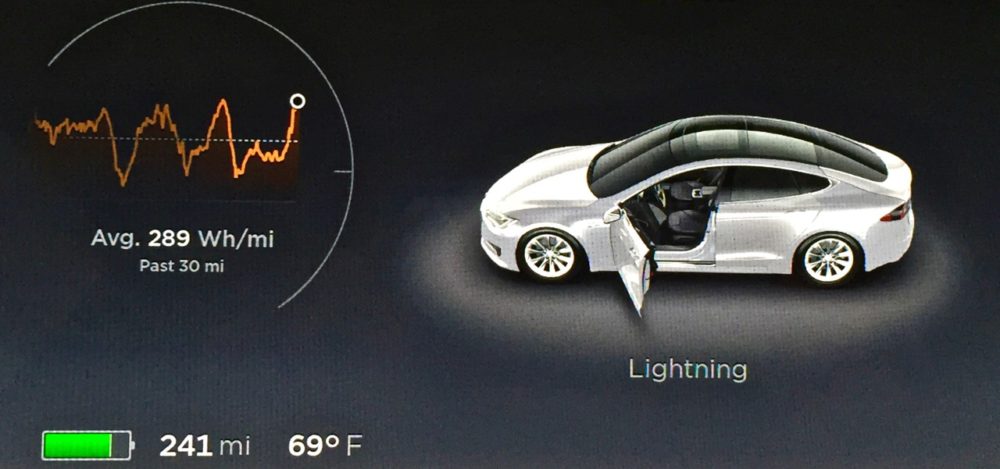
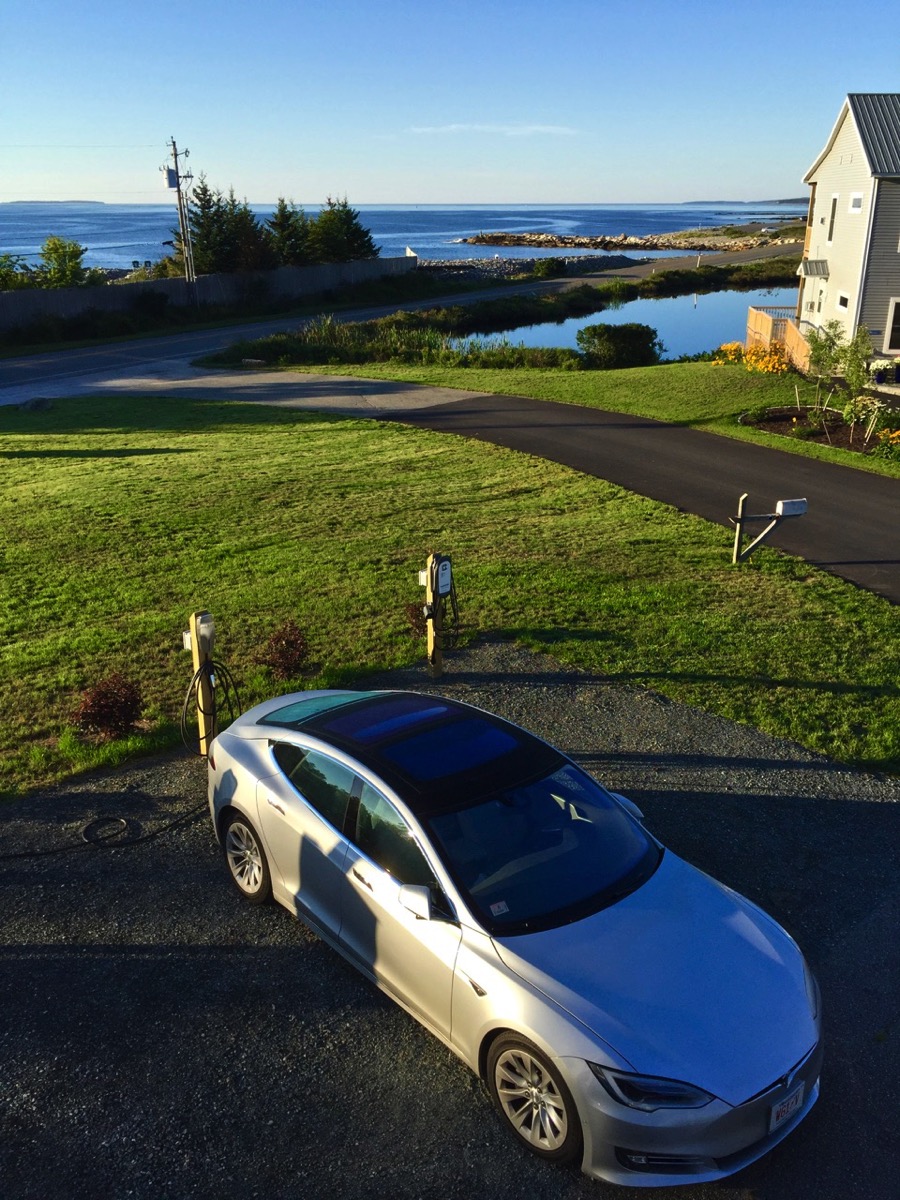


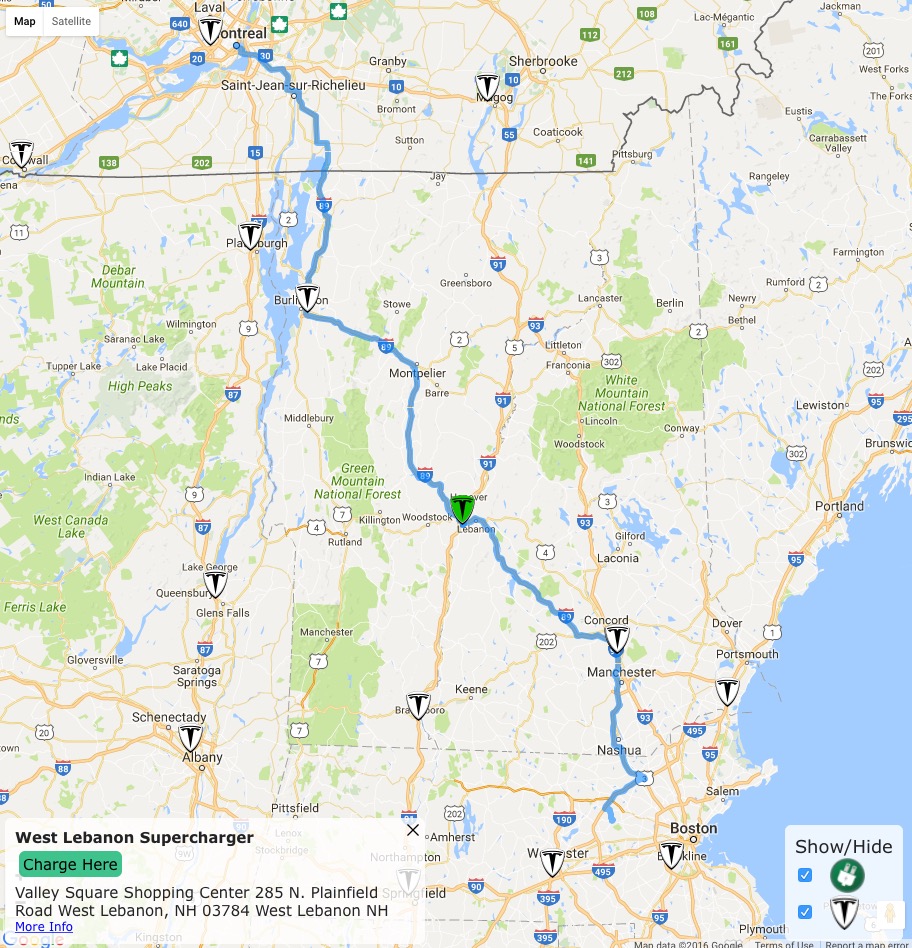
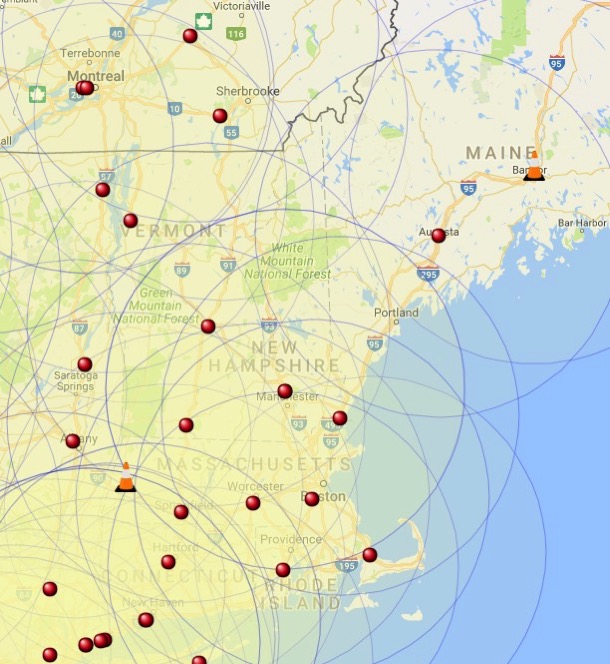 Unlike our prior road trip to Maine, this route really epitomizes Elon Musk’s vision for what an electric car trip should be like. While we have the luxury of a nearly 300 mile range with Lightning, we have no fewer than 3 superchargers along our route AND we have a supercharger available in Montreal when we get there. No one driving a Tesla would have any range anxiety on this route. In fact, as you can see from the circles on the map to the right, any electric car with 100 miles of range would handily make the trip using just Superchargers. And just like in a gasoline car, one could easily do this trip with no planning whatsoever; just point the car in the direction you want to go, and follow the in-car Navigation directions to Superchargers when the planning software tells you to.
Unlike our prior road trip to Maine, this route really epitomizes Elon Musk’s vision for what an electric car trip should be like. While we have the luxury of a nearly 300 mile range with Lightning, we have no fewer than 3 superchargers along our route AND we have a supercharger available in Montreal when we get there. No one driving a Tesla would have any range anxiety on this route. In fact, as you can see from the circles on the map to the right, any electric car with 100 miles of range would handily make the trip using just Superchargers. And just like in a gasoline car, one could easily do this trip with no planning whatsoever; just point the car in the direction you want to go, and follow the in-car Navigation directions to Superchargers when the planning software tells you to.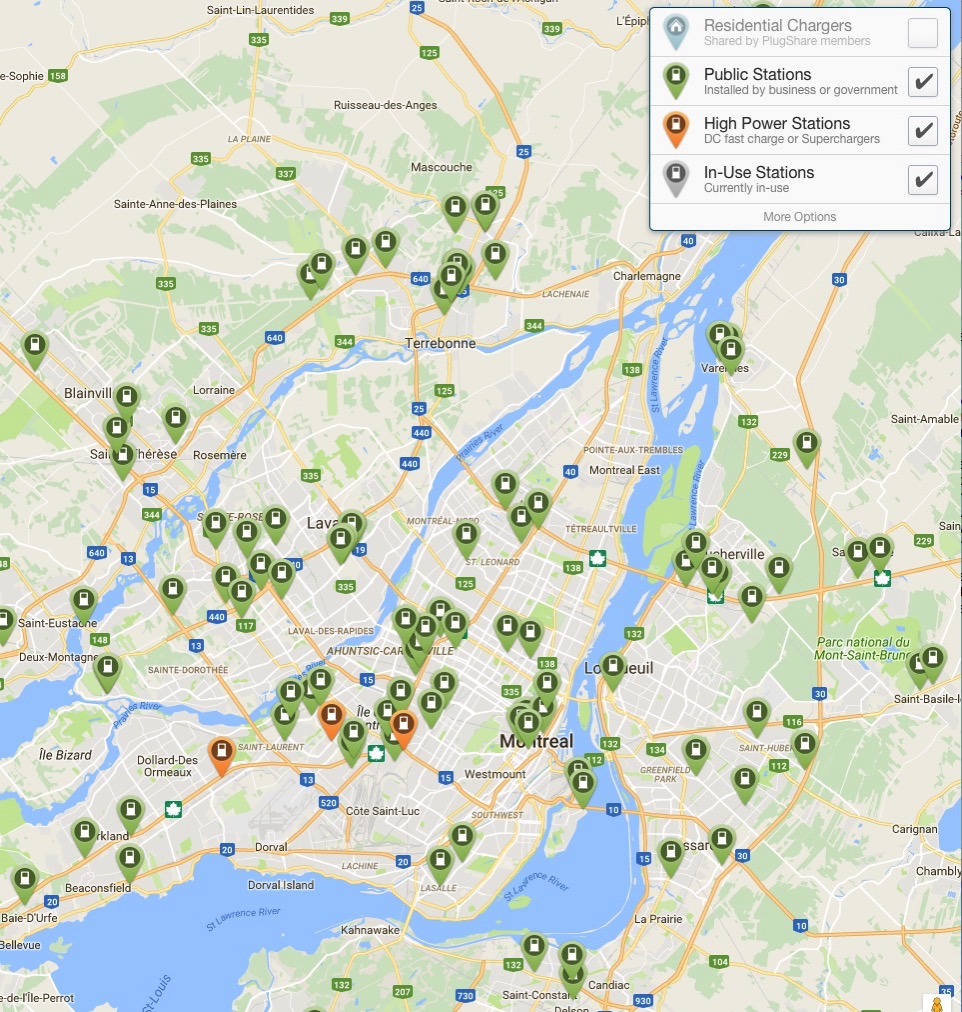
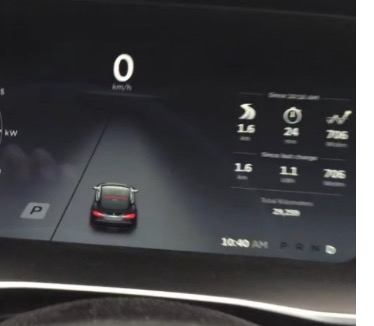 It was there that for the first time, I saw a big square P show up on my dash, indicating that Lightning saw an opportunity to
It was there that for the first time, I saw a big square P show up on my dash, indicating that Lightning saw an opportunity to